The Most Powerful Natural Antibiotics Known to Mankind
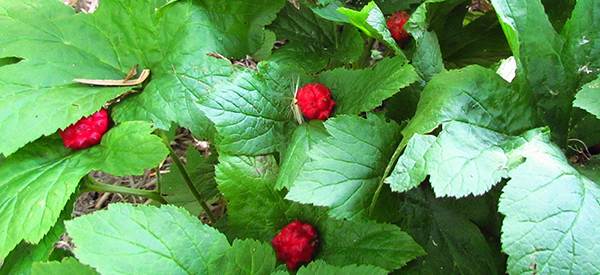
by Bob
Before the 1920s, when Alexander Fleming first discovered penicillin, western medicine had no effective treatment for infection. Something as simple as a scrape or cut could progress into a blood infection (sepsis), and result in death. Since Fleming’s discovery, and with further advances in antibiotic research, we’ve been able to make drugs that treat different types of bacteria. Lives all over the world have since been spared.
In the process, information about natural remedies has been lost. Now, we are seeing a darker side to synthetic antibiotics. Overuse and improper use of antibiotics has led to bacterial resistance. The antibiotics we have relied on over the past century are becoming less effective against infections, or losing their potency all together. The extent of bacterial resistance is extreme. We now have “super bugs” which have grown resistant to all of our available antibiotics. Infections we have long been able to cure are now again life threatening.
Science currently has little to offer in establishing plant remedies as effective medicines. The immersion of “super bugs” and our exhaustive use of antibiotics has generated interested in herbal medicine and other “alternative” therapies. Much of the research being done targets the chemical constituents of plants. Less frequently is the whole plant or plant part (leaves, flowers, roots) studied. Likely, it is the whole plant, or plant part, that is most effective, and causes the fewest side effects.
Related: Similar to Morphine: The Best Natural Painkiller that Grows in Your Backyard
Let’s talk about some of these plants and other remedies.
#1. Goldenseal (Hydrastis canadensis)
Goldenseal is a plant that is native to North America. Over harvesting of the plant in the United States has reduced the availability of goldenseal. Attempts to replenish the bounty of goldenseal are being made in areas of the Blue Ridge Mountains.
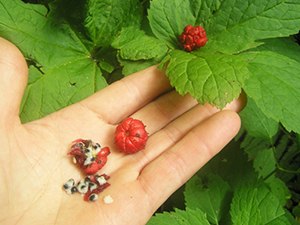 Goldenseal has traditionally been used to treat skin infections resulting from injuries such as cuts and scrapes. The most effective form is the extract of the leaf of the plant. The extract is applied topically to injured skin. Not only does the leaf extract help with skin and other soft tissue infections, it has also been demonstrated to be effective against some “super bugs.” Bacterial infections (such as MRSA – methicillin resistant Stapholococcus aureus) that we can no longer cure with antibiotics are showing responsiveness to goldenseal leaf extract.
Goldenseal has traditionally been used to treat skin infections resulting from injuries such as cuts and scrapes. The most effective form is the extract of the leaf of the plant. The extract is applied topically to injured skin. Not only does the leaf extract help with skin and other soft tissue infections, it has also been demonstrated to be effective against some “super bugs.” Bacterial infections (such as MRSA – methicillin resistant Stapholococcus aureus) that we can no longer cure with antibiotics are showing responsiveness to goldenseal leaf extract.
Taking goldenseal by mouth has not demonstrated anti-infection properties, but there is early research being done into use for non-infection conditions, including cancer.
#2. Garlic (Allium sativum)
 The garlic bulb that is common in cuisine also has medicinal value. The antibacterial components of garlic are activated when exposed to air. Crushing garlic bulbs works to accomplish this. In the lab, or “in vitro,” garlic has shown to be effective against bacteria that typically respond to penicillin, such as non-MRSA staph infections, the cause of many infections in people. Garlic has not been shown to be effective against “super bugs,” like MRSA, but the research is limited.
The garlic bulb that is common in cuisine also has medicinal value. The antibacterial components of garlic are activated when exposed to air. Crushing garlic bulbs works to accomplish this. In the lab, or “in vitro,” garlic has shown to be effective against bacteria that typically respond to penicillin, such as non-MRSA staph infections, the cause of many infections in people. Garlic has not been shown to be effective against “super bugs,” like MRSA, but the research is limited.
Garlic has also been found to be effective in treating Candida species fungal infections, including those infections which are resistant to commonly used anti-fungal medications. Garlic has been found to be more effective against many Candida infections than other plants – including neem, plants in the borage family, Holy basil and fenugreek.
⇒ 800+ Medicinal Plants And Remedies That Might Be Growing Around Your House
#3. Ginger (Zingiber officinale)
 Ginger has historically been used to treat coughs and asthma. Both the fresh juice of the ginger root and ginger root extract are used. Ginger has been used effectively to treat fungal, bacterial and viral infections. Scientific research shows that ginger has potential for use against “superbugs.”
Ginger has historically been used to treat coughs and asthma. Both the fresh juice of the ginger root and ginger root extract are used. Ginger has been used effectively to treat fungal, bacterial and viral infections. Scientific research shows that ginger has potential for use against “superbugs.”
Use boiled ginger root to treat coughs, colds, asthma and other respiratory infections – including pneumonia. Storing ginger with the peel still on will help it keep longer. By putting it in a plastic bag, removing as much air from the bag as possible and keeping it in a cool place, you with extend its shelf life for several weeks. It can be frozen for longer periods of storage.
#4. Indigo (Baptisia sp.)
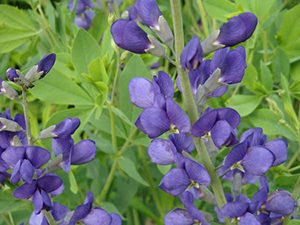 Herbs and other remedies with antimicrobial properties – being effective against bacteria, fungi and viruses – can be used to prevent illness, which is always preferable to having to have to treat illness.
Herbs and other remedies with antimicrobial properties – being effective against bacteria, fungi and viruses – can be used to prevent illness, which is always preferable to having to have to treat illness.
Indigo root extract has been used in areas of the world to treat typhoid fever. We don’t see cases of typhoid fever often in the United States. However, we do see over one million cases of salmonella related food poisoning each year in the United States. What’s the connection between typhoid fever and salmonella? The bacteria that causes typhoid fever is similar in many ways to the bacteria that causes salmonella. Potentially, indigo root extract could help prevent food poisoning from salmonella when used in the kitchen as part of cleaning solutions.
Baptisia species can be found along the East Coast of the United States from Maine to Louisiana.
#5. Licorice (Glycyrrhiza glabra)
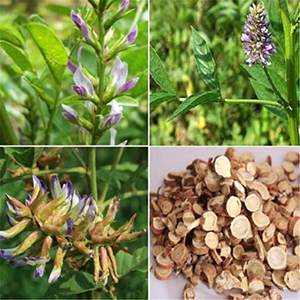 Licorice root has been found to have anti-inflammatory effects. It works especially well in the respiratory system. Licorice is particularly helpful in treating allergic and asthmatic conditions that cause irritation in the airway.
Licorice root has been found to have anti-inflammatory effects. It works especially well in the respiratory system. Licorice is particularly helpful in treating allergic and asthmatic conditions that cause irritation in the airway.
Inflammation is part of the body’s normal response to most infections. While licorice may or may not have use as an antibiotic, it can be used in combination with antibiotic remedies to ease symptoms and otherwise promote recovery from respiratory illnesses.
Pregnant women should avoid licorice, as it can be dangerous in pregnancy. Excessive use of licorice can raise blood pressure. Consuming large amounts of licorice can drop the body’s levels of potassium, which can cause abnormal heart rhythms.
=>Find out our Forefather’s Time-Tested Natural Cures and Household Remedies
#6. Cinnamon (Cinnamomum zeylanicum)
 Cinnamon bark can be extracted in alcohol. We have the best information for its effectiveness for the use in the treatment of mouth and gum conditions. Cinnamon extract can be used in toothpastes and mouthwashes to treat gingivitis, tongue inflammation, irritation and infections in the mouth, and oral ulcers.
Cinnamon bark can be extracted in alcohol. We have the best information for its effectiveness for the use in the treatment of mouth and gum conditions. Cinnamon extract can be used in toothpastes and mouthwashes to treat gingivitis, tongue inflammation, irritation and infections in the mouth, and oral ulcers.
Cinnamon oil is very concentrated. Unlike cinnamon bark extracted in alcohol, it is too strong to be used without being diluted. It should be diluted to a concentration of 2% before being used. This is equal to approximately one teaspoon of cinnamon oil per cup of water. This formulation will make an effective, non-alcoholic mouthwash.
Being an antimicrobial, cinnamon can be used in foods as a preservative. Preventing the growth of bacteria, it can extend the shelf life of foods.
#7. Honey (produced by bees of the genus Apis)
 Honey is a magical, versatile remedy with antibacterial properties. When used directly on skin wounds, raw honey will help to prevent infection and promote healing. Honey is especially useful on any type of burn. Not only will it protect the burn from infection, but the enzymes in honey will help to remove dead skin cells (“debridement”) and speed burn recovery.
Honey is a magical, versatile remedy with antibacterial properties. When used directly on skin wounds, raw honey will help to prevent infection and promote healing. Honey is especially useful on any type of burn. Not only will it protect the burn from infection, but the enzymes in honey will help to remove dead skin cells (“debridement”) and speed burn recovery.
Most store-bought honey has been pasteurized, which destroys the antibacterial and enzymatic properties of honey. Raw honey must be used for medicinal purposes. Raw honey may contain botulism spores, which can cause botulism infection in children under the age of one.
#8. Turmeric (Curcuma longa)
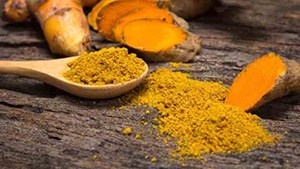 Honey works magic on most wounds, but some wounds heal more slowly. Diabetic wounds and pressure ulcers are skin wounds that are difficult to treat and if untreated, can lead to gangrene and systemic infection (sepsis).
Honey works magic on most wounds, but some wounds heal more slowly. Diabetic wounds and pressure ulcers are skin wounds that are difficult to treat and if untreated, can lead to gangrene and systemic infection (sepsis).
Turmeric has been found to be effective in treating this type of persistent wound. Turmeric is anti-inflammatory, antimicrobial and has chemical constituents that promote healing and reduce scarring.
To be most effective, turmeric should be used in an ointment.
#9. Elderberry (Sambucus nigra and its subspecies)
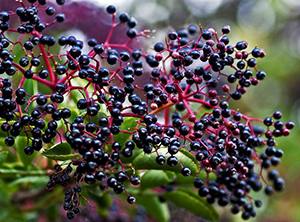 During times of exhaustion or stress, our bodies are less efficient at resisting and recovering from infection. This leaves us more susceptible to infection. Elderberry, whether or not it has antibiotic properties, helps to stabilize overall health and strengthen the immune system. The healthier we are, the better we are able to fight infection.
During times of exhaustion or stress, our bodies are less efficient at resisting and recovering from infection. This leaves us more susceptible to infection. Elderberry, whether or not it has antibiotic properties, helps to stabilize overall health and strengthen the immune system. The healthier we are, the better we are able to fight infection.
Elderberry has been studied to prevent respiratory infections that are common among airplane travelers. When used for the 10 days prior to travel, elderberry was found to reduce cold duration by approximately two days, and also to reduce the severity of cold symptoms.
Less research has been done on the prophylactic use of elderberry to reduce the symptom severity and the duration of the common cold, but it is certainly plausible.
#10. Echinacea (Echinacea purpura)
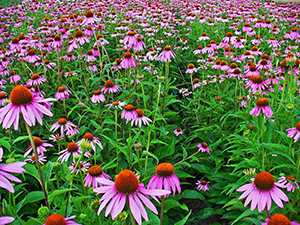 Preparations of Echinacea purpura have been found to be at least as effective as pharmacological anti-viral drugs that are used to treat the flu. Caused by a virus, influenza (the flu) causes millions of people to get sick in the United States every year. Hundreds of thousands of people end up in the hospital for care, and thousands of people die every year from the flu.
Preparations of Echinacea purpura have been found to be at least as effective as pharmacological anti-viral drugs that are used to treat the flu. Caused by a virus, influenza (the flu) causes millions of people to get sick in the United States every year. Hundreds of thousands of people end up in the hospital for care, and thousands of people die every year from the flu.
The use of Echinacea purpura to treat the flu is associated with fewer complications and fewer adverse effects than anti-viral medications used to treat the flu.
Like elderberry, we believe there is potential for Echinacea purpura to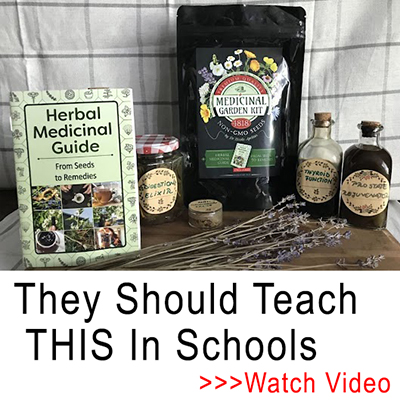 be used as a preventative for respiratory infections and possibly more.
be used as a preventative for respiratory infections and possibly more.
The beautiful purple coneflower can be found in the central to southeastern parts of the United States. There are many species of Echinacea and they can look almost indistinguishable from one another. The only species with potential for medicinal use are E. purpura, E. augustifolia, and E. pallida. Other species or subspecies of Echinacea may or may not have medicinal value.
#11. Cumin (Cuminum cyminum)
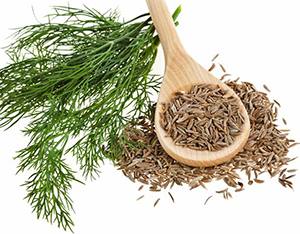 Cumin is a spice commonly used in Middle Eastern and East Indian cuisines. In addition to its culinary uses, it exhibits antimicrobial activity against the bacteria in the mouth that can cause tooth decay. It will often work when pharmacological preparations will not. It therefore has potential to be effective in fighting “super bugs.”
Cumin is a spice commonly used in Middle Eastern and East Indian cuisines. In addition to its culinary uses, it exhibits antimicrobial activity against the bacteria in the mouth that can cause tooth decay. It will often work when pharmacological preparations will not. It therefore has potential to be effective in fighting “super bugs.”
#12. Cranberry
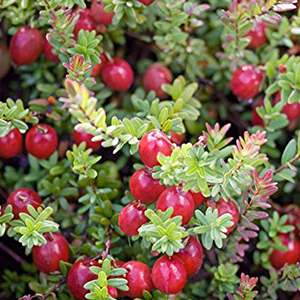 Cranberry fruit is used for the prevention of urinary tract infections (UTIs). It works for this purpose because of its anti-inflammatory properties. Also, it prevents bacteria from sticking to the wall of the bladder. This makes it more likely that bacteria will wash out in urine instead of staying in the bladder.
Cranberry fruit is used for the prevention of urinary tract infections (UTIs). It works for this purpose because of its anti-inflammatory properties. Also, it prevents bacteria from sticking to the wall of the bladder. This makes it more likely that bacteria will wash out in urine instead of staying in the bladder.
The above plants grow commonly throughout many parts of the world, are easy to recognize and easy to prepare as medicinal remedies. They hold promise in cases that fail to respond to western antibiotics. The growing body of scientific research may help us recover the information lost when we started using plants less and less and synthetic antibiotics more and more. The Pharmaceutical Industry almost made this knowledge obsolete. But in my opinion this knowledge should not be lost. We might need it when things go really bad. So please feel free to share or print this article and put it in your bug-out-bag or your SHTF survival kit. This article was inspired by ”The Lost Book Of Herbal Remedies”. You can find over 100 similar natural remedies recipes in the book. You can get your hard cover copy HERE!
Anyone can join.
Anyone can contribute.
Anyone can become informed about their world.
"United We Stand" Click Here To Create Your Personal Citizen Journalist Account Today, Be Sure To Invite Your Friends.
Before It’s News® is a community of individuals who report on what’s going on around them, from all around the world. Anyone can join. Anyone can contribute. Anyone can become informed about their world. "United We Stand" Click Here To Create Your Personal Citizen Journalist Account Today, Be Sure To Invite Your Friends.
LION'S MANE PRODUCT
Try Our Lion’s Mane WHOLE MIND Nootropic Blend 60 Capsules
Mushrooms are having a moment. One fabulous fungus in particular, lion’s mane, may help improve memory, depression and anxiety symptoms. They are also an excellent source of nutrients that show promise as a therapy for dementia, and other neurodegenerative diseases. If you’re living with anxiety or depression, you may be curious about all the therapy options out there — including the natural ones.Our Lion’s Mane WHOLE MIND Nootropic Blend has been formulated to utilize the potency of Lion’s mane but also include the benefits of four other Highly Beneficial Mushrooms. Synergistically, they work together to Build your health through improving cognitive function and immunity regardless of your age. Our Nootropic not only improves your Cognitive Function and Activates your Immune System, but it benefits growth of Essential Gut Flora, further enhancing your Vitality.
Our Formula includes: Lion’s Mane Mushrooms which Increase Brain Power through nerve growth, lessen anxiety, reduce depression, and improve concentration. Its an excellent adaptogen, promotes sleep and improves immunity. Shiitake Mushrooms which Fight cancer cells and infectious disease, boost the immune system, promotes brain function, and serves as a source of B vitamins. Maitake Mushrooms which regulate blood sugar levels of diabetics, reduce hypertension and boosts the immune system. Reishi Mushrooms which Fight inflammation, liver disease, fatigue, tumor growth and cancer. They Improve skin disorders and soothes digestive problems, stomach ulcers and leaky gut syndrome. Chaga Mushrooms which have anti-aging effects, boost immune function, improve stamina and athletic performance, even act as a natural aphrodisiac, fighting diabetes and improving liver function. Try Our Lion’s Mane WHOLE MIND Nootropic Blend 60 Capsules Today. Be 100% Satisfied or Receive a Full Money Back Guarantee. Order Yours Today by Following This Link.






